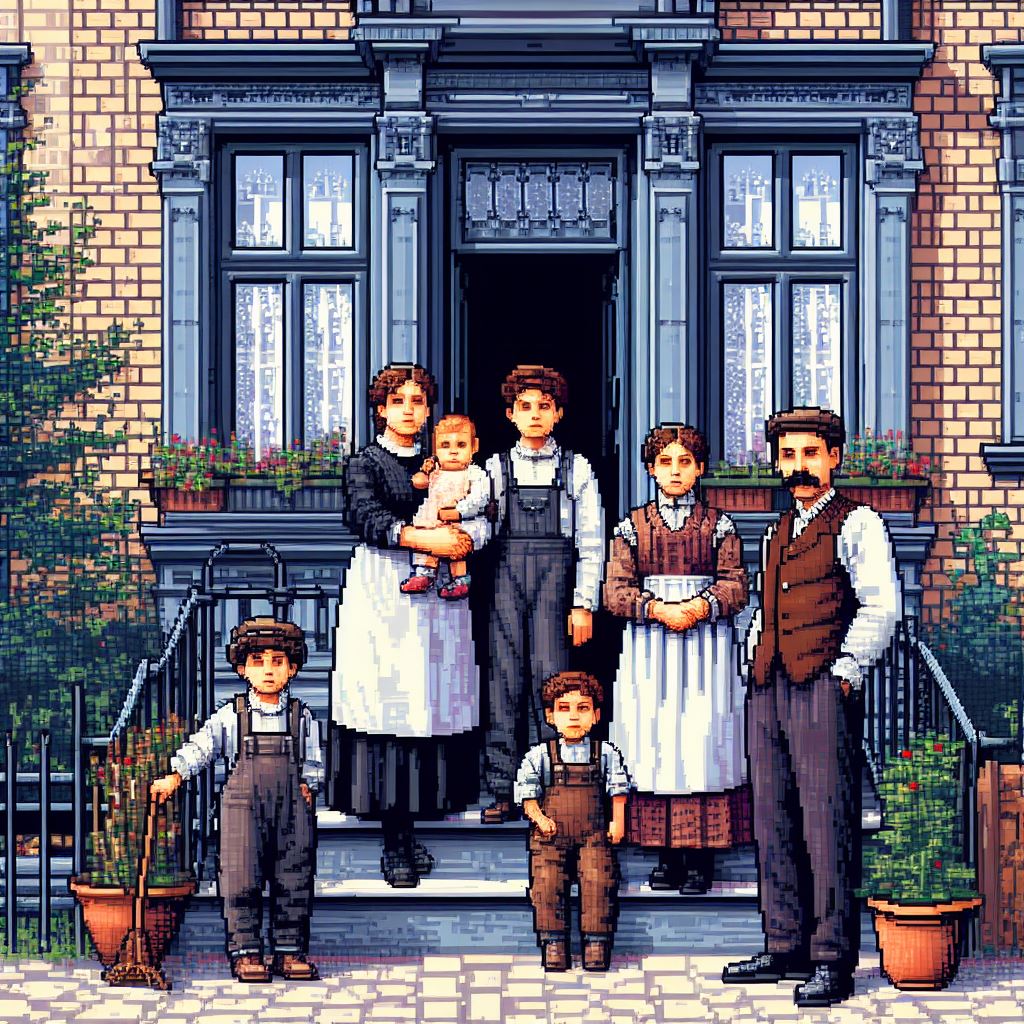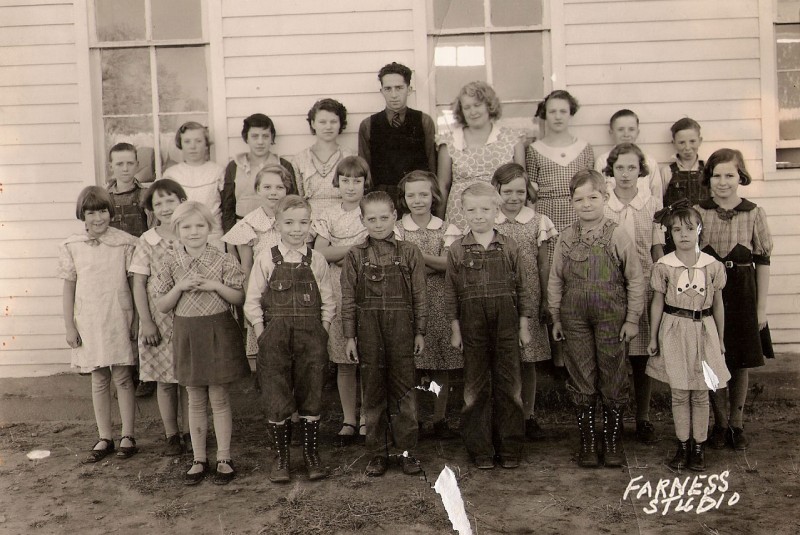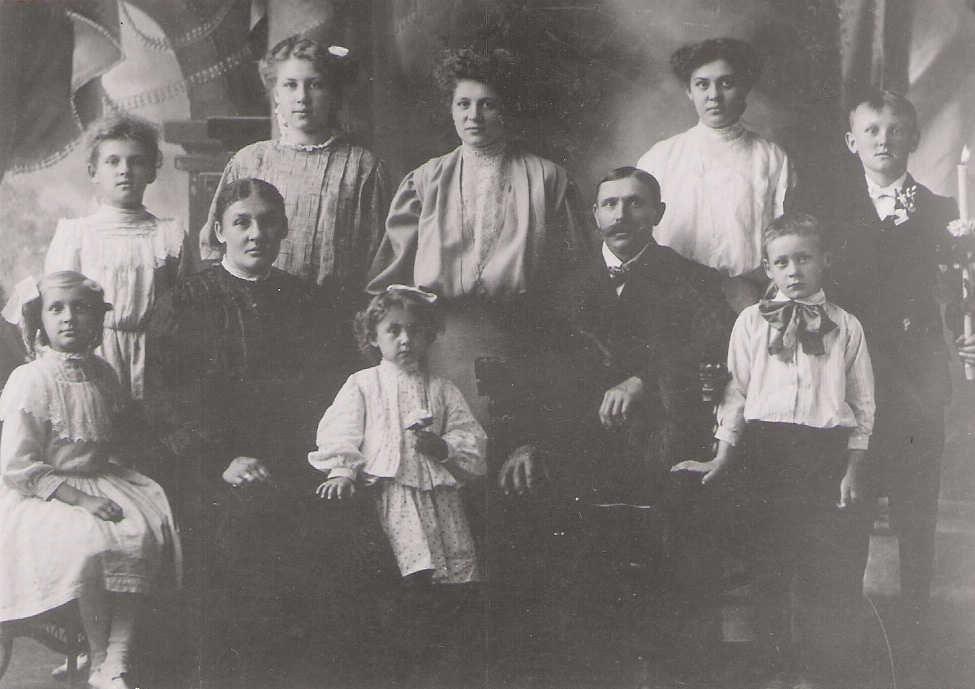The farthest back I can go on my Zalewski line is to Frank & Anna Zalewski. They would be my great-great grandparents. Unfortunately, I don’t know much about this couple, except what I can gather through research and my grandmother. My grandfather passed away before I could ask him about the Zalewski family.
From what I can gather, Frank Zalewski, Sr., his wife Anna, and their two oldest children – Martha and Angeline, emigrated to the US from the Baltic port of Danzig (GdaÅ„sk) and arrived in Baltimore, Maryland, in about 1890. The couple’s third child, Mary, was born in Baltimore in March 1891 (Though, according to my research, the census says she was born in Ohio.) The family then traveled west to Nebraska and east, from there, to the Polish community in Chicago. (I have not yet found hard evidence of this, but this is what I received from a fellow Zalewski researcher.) By May, 1892, the family had settled in Milwaukee, Wisconsin. This is backed-up according to an interview conducted in April 1980 with Frank Gierszewski, Jr, a grandson of Frank and Anna Zalewski by the same researcher. He indicated his grandparents left Poland from the Baltic port of Danzig and entered the United States through the port of Baltimore, Maryland.
There is some confusion, however, as to the area of Poland in which Frank and Anna Zalewski resided prior to their emigration to the United States in 1890. During a telephone interview with their granddaughter, Caroline (Walczak) Sullivan, conducted in January 1995, she indicated that Frank and Anna lived somewhere in the province of Poznan — an area of Poland then under German jurisdiction and known as South Prussia. This would correspond with information supplied on the death certificate and in the newspaper obituary of Frank Zalewski, Sr in 1941. Although neither source mentions Poznan as his place of birth, both list Germany as his country of origin. (Much of western Poland, including Poznan Province, became German territory after the three partitions of Poland at the end of the eighteenth century.)
There is, however, a conflicting story as to the area of Poland from which Frank and Anna originated. During a 1993 telephone interview with another granddaughter, Irene (Zalewski) Lutzenberger, she indicated that her late father (my great grandfather, Joseph Zalewski) had always said his parents came from eastern Poland — an area then under Russian rule. Irene’s father also stated that when his parents entered the United States, their surname was spelled “Salefsky,” thereby reflecting the Russian influence. Although no official documents can be found to verify this, it is interesting to note that in the 1934 obituary of another grandchild, Norbert Cybela, the maiden name of Norbert’s mother is spelled “Zalesky.”
It is hypothetically possible that Frank Zalewski, Sr is, indeed, born and raised in Russian Poland and, at some later point in his life, moved to the German section in which Poznan Province was located. Although traveling across political borders was difficult in 19th-century Europe, to say the least, it was not impossible. In Russian Poland, for example, all debts to the government, including military service in the czar’s army, had to be fulfilled before travel documents would be issued and borders would be crossed. Two years of active military service followed by two years in the reserve forces was required of all males when they reached their twentieth birthday. In Frank’s case, that would have accounted for the years 1878 through 1882. We know he married Anna Lindner (a German) in January 1885, which means he probably relocated from Russian-held, eastern Poland to the German-held, western area sometime between 1882 and 1884. This, of course, is only speculation but would explain the Russian “sky” ending on the surname.
I’ve spent a great deal of my research time trying to find any more information on this family. Unfortunately, getting records from 18th century Poland/Prussia is very difficult, if not impossible. As always, my hopes go out to my readers that I will run across a connection with someone else’s family. Contrary to my popular belief, Zalewski is a somewhat common name in the United States, and even Wisconsin, but I’ve not yet been able to connect my family line to any of them. I find it hard to believe that Frank was an only child, but who knows?





